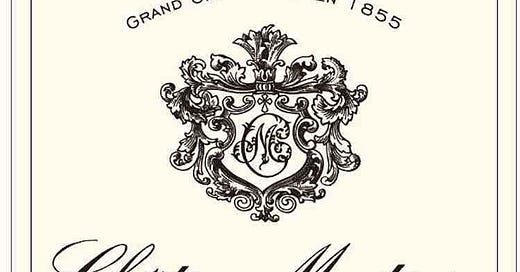Nestled in the northern reaches of the Médoc, Saint-Estèphe stands apart from its neighbors with a rugged personality that’s grounded in its unique terroir. Here, the influence of the Atlantic feels stronger, and the soils—rich with clay and gravel—are uniquely suited to nurturing robust, deeply structured wines. This clay helps Saint-Estèphe’s vineyards retain moisture through dry spells, a feature that gives these wines their signature tannic depth and resilience, allowing them to age gracefully over decades. For those who know Bordeaux, Saint-Estèphe’s wines are unmistakable, delivering power with an earthy elegance that’s matched by few.
Primary Grape Varieties
Cabernet Sauvignon leads here, providing structure and intensity, often with notes of blackcurrant, cedar, and tobacco.
Merlot offers a plush counterbalance, bringing softer textures and plum or dark berry notes to the blend.
What Makes Saint-Estèphe Special
Robust Terroir: The heavy clay soils not only support Cabernet Sauvignon’s depth but also allow vines to survive Bordeaux’s famously capricious weather. This results in wines that are particularly tannic in youth, softening over time to reveal layers of minerality and savory complexity.
Age-Worthy Structure: The powerful tannic framework of Saint-Estèphe’s wines allows them to evolve beautifully, unveiling secondary notes like graphite, leather, and spice as they mature. These wines develop an almost mythical quality with age—becoming softer, more nuanced, and rewarding for those who wait.
Tasting Notes for Blind Tasting
Expect flavors of blackcurrant, cedar, and earth, with hints of leather and graphite emerging with age. Younger Saint-Estèphe wines often exhibit a firm tannic grip, softened by time to reveal a rich, savory complexity.
Quiz Time
What role does clay soil play in shaping the wines of Saint-Estèphe?
How might Saint-Estèphe differ from neighboring Pauillac in terms of structure and flavor?
Premium Subscriber Content: Delving Into Saint-Estèphe’s Depths
Terroir Insights
The terroir of Saint-Estèphe is one of Bordeaux’s most distinctive, with its heavy clay and gravel soils setting it apart from its Médoc neighbors. The clay retains moisture, supporting vine health during dry spells and allowing for a fuller phenolic ripeness.
Keep reading with a 7-day free trial
Subscribe to Daily Terroir: Exploring Wine Regions One Day at a Time to keep reading this post and get 7 days of free access to the full post archives.





